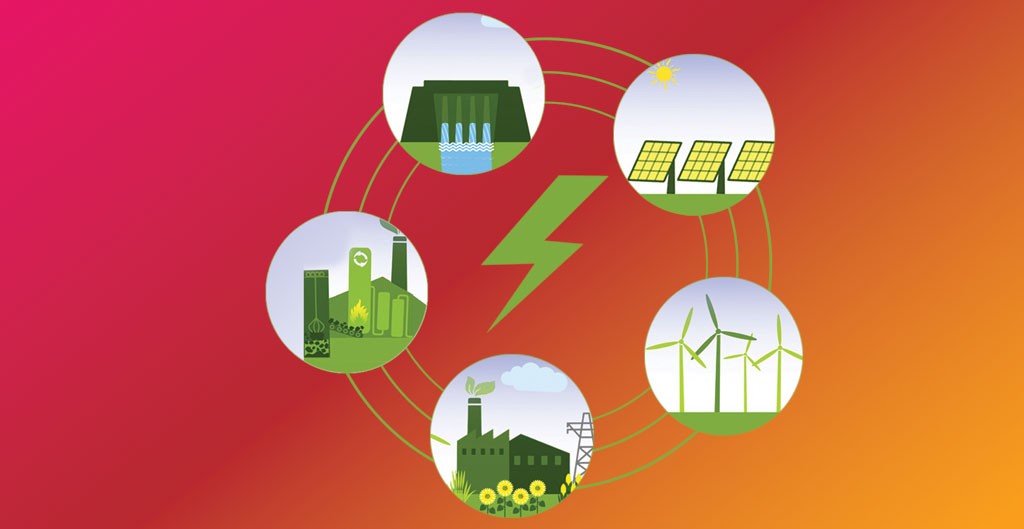Can India be a hot bed for Energy Management?
By EPR Magazine Editorial March 8, 2017 12:29 pm IST
By EPR Magazine Editorial March 8, 2017 12:29 pm IST

This article explains how energy management is becoming critical in Indian context
The prosperity and growth of the modern societies depend to a large extent on having sufficient energy available – as electric power, fuel or feedstock. For long, fossil fuels – oil, gas, coal and lignite make up the majority of the global energy supply. It was only the oil crises of 1973 – 1979 when the foundation of this assumption was shaken for the first time. This period was followed by an increased innovation in power production (including renewable energy) and energy efficiency in many industrialised countries.
With these developments, economic growth and energy consumption have stopped moving in tandem, but the world’s energy need is still growing, and will continue to grow, especially in large emerging economies such as India. This growing demand will result in a price increase of fossil fuel over the long term. The prices will increase not only because of the scarcity of the fossil fuel but all because concentration of the world’s major oil and gas reserves are limited to few regions. Political instability in some of these regions adds to the limitation of supply.
Oil consumption in India increased by 11 per cent in 2015-16 whereas the domestic production which is around 20 per cent of the overall consumption fell for the fourth consecutive year. Natural gas consumption marginally rose to 52 billion cu. m., aided by 14 per cent rise in imports while domestic production fell 4 per cent. For coal, though imports have decreased post increased production by Coal India, but we are still depended on imports. Niti Aayog has projected an import of 160.16 mn tonne (approximately 25 per cent of the total consumption) of coal in FY 2016-17.
To fuel the economic growth, make in India, 100 cities and other plans of the country, India needs to address the increasing concerns of energy affordability and security. Secure and low cost source of power along with efficient consumption can help India towards its economic goals.
The idea of energy management revolves around the efficient production and consumption of energy. Can we mix the power source to reduce the overall cost? Can we reduce the consumption or make the system more efficient? India is somehow trying to find its answers in renewable energy and energy efficiency.
India set itself a target to achieve 57 per cent of its total electricity capacity to come from renewable sources by 2027. Investment in solar energy and large scale installation has pushed the prices downward. The recent contract of Rewa Solar power plant in Madhya Pradesh has seen a price of Rs2.97 per unit. Solar power is now cheaper than coal in some parts of the world. In less than a decade, it’s likely to be the lowest-cost option almost everywhere.
As on October 31, 2016, cumulative capacity of 46.33 GW grid interactive renewable energy capacities has been installed in the country, which constitutes 15 per cent of the total installed power generation capacity of 307.69 GW. Though the targets of 2022 look distant, still it will help India to address the issues of energy affordability and security.
Energy efficiency is another area of focus for the current government. Having the energy efficient products and systems at the point of the consumption can release a significant burden on the generation and transmission. Areas of focus are general lighting, fans, agriculture pumps and air conditioning.
The Ministry of Power formed Energy Efficiency Services Limited (EESL) in 2010, which is a joint venture of NTPC, PFC, REC and Power Grid. For initial five years, EESL was an anonymous organisation. It conceptualised different business models to work with municipalities and local government on LED street lighting and did sample testing of the same. The company got the media attention during the early days of 2015 with the NDA government’s much-talked-about LED distribution programme (UJALA), which is now named as Unnat Jyoti by Affordable LEDs for All (UJALA). The programme has a vision to replace the 770 million incandescent lamps with LED Bulbs and around 35 million normal streetlamps with LED Streetlights by 2019.
EESL has sold 210 million LED bulbs to the home segment which is equivalent to a saving of 27,355 KWh per year. Other areas of focus are BLDC fans, extra efficient air conditioning and agriculture pumps. EESL is a fast-growing profitable organisation with a business model of making capital investment and take revenues from the energy saving.
Authored by_Shiv Shanker Singh,
Senior Consultant, Energy Vertical
Feedback Business Consulting Services Pvt. Ltd
We use cookies to personalize your experience. By continuing to visit this website you agree to our Terms & Conditions, Privacy Policy and Cookie Policy.